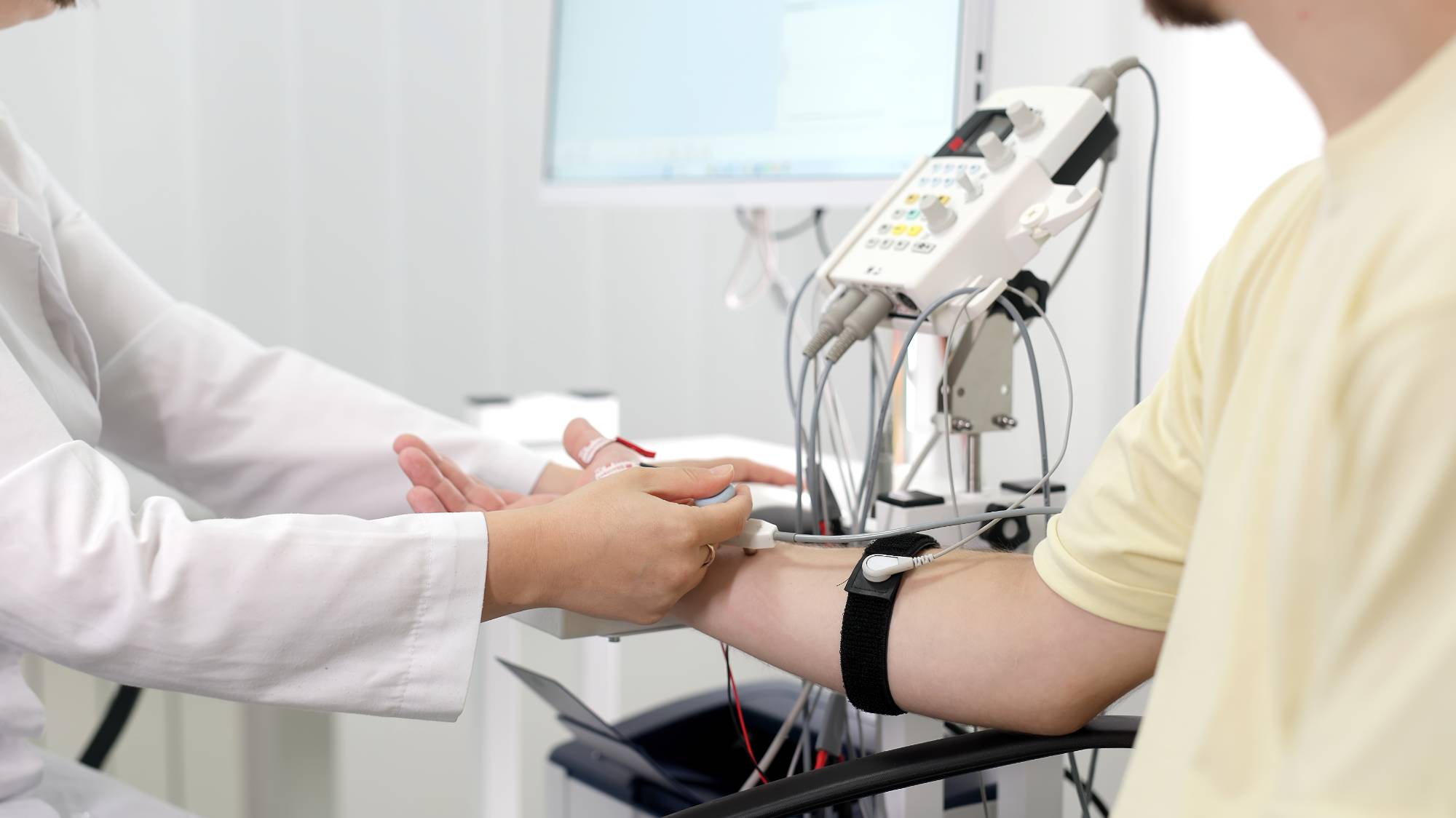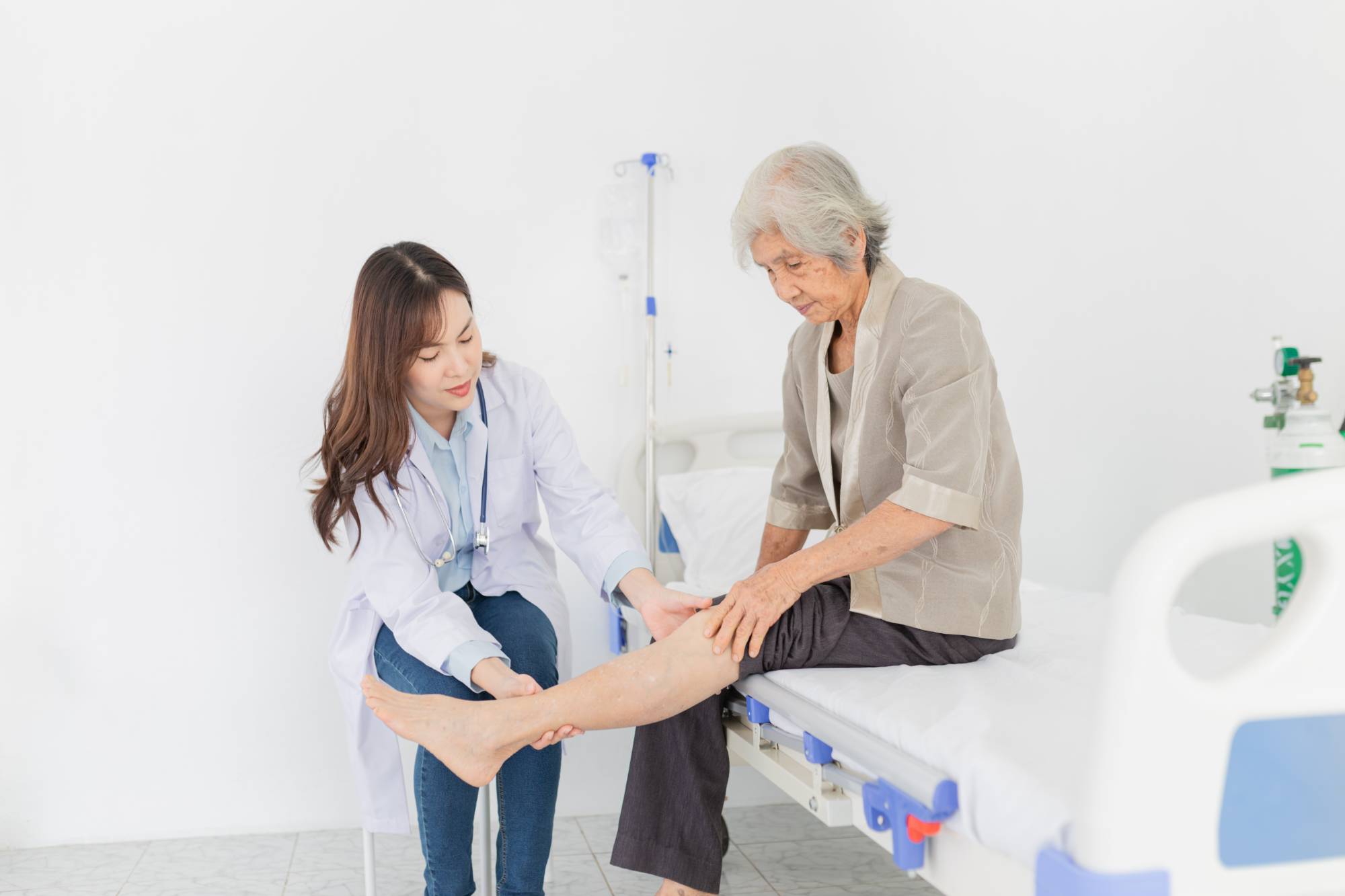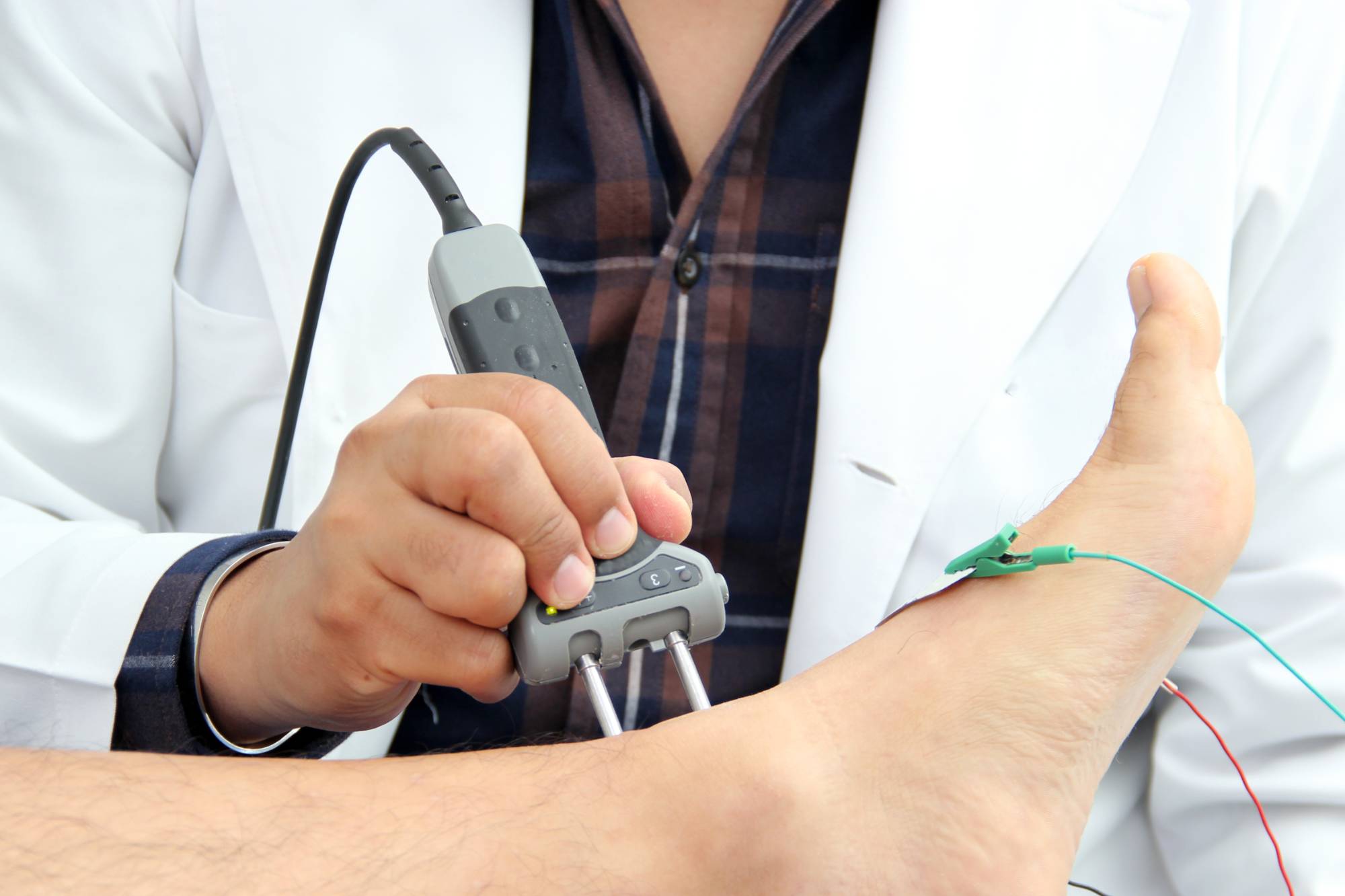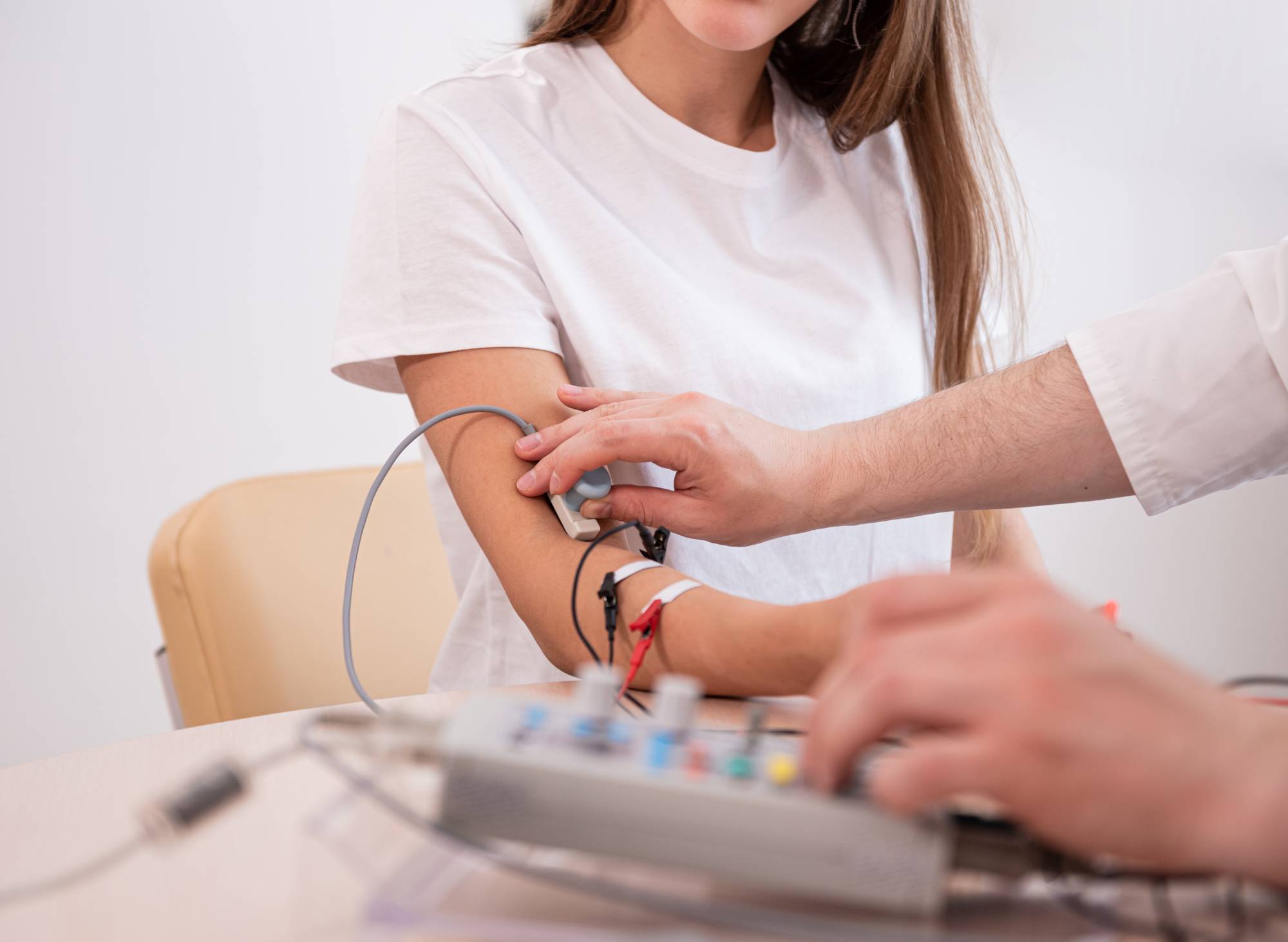Advanced nerve and muscle diagnostic testing that pinpoints exactly what’s causing your pain, numbness, or weakness.

Reviews

You’ve been dealing with numbness, tingling, or weakness for months. Maybe your regular doctor ran some basic tests but couldn’t give you clear answers. You’re tired of guessing games and ready for real answers.
Our nerve and muscle testing gives you exactly that. Through advanced electromyography and nerve conduction studies, we measure how well your nerves and muscles actually function. No more wondering if your symptoms are “all in your head” or if you’re dealing with something serious.
When you know precisely what’s wrong, you can move forward with confidence. Whether it’s carpal tunnel, sciatica, peripheral neuropathy, or something else entirely, you’ll have the diagnostic clarity you need to make informed treatment decisions.
NY Spine Medicine has been serving the Williamsburg and greater New York area with specialized diagnostic services that get to the root of complex nerve and muscle disorders. Our team understands that accurate diagnosis is the foundation of effective treatment.
We’ve invested in the advanced equipment and expertise needed to perform comprehensive nerve and muscle evaluations. When other providers can’t give you answers, we dig deeper with the specialized testing that reveals what’s really happening in your body.
You’re not just another appointment on our schedule. You’re someone who deserves clear answers and a path forward.

Your nerve and muscle testing typically involves two main components: electromyography (EMG) and nerve conduction studies (NCV). Both are performed in our office and usually completed within an hour.
During the nerve conduction study, we place small electrodes on your skin and send mild electrical pulses to measure how quickly and effectively your nerves transmit signals. For the EMG portion, a thin needle electrode is inserted into specific muscles to record their electrical activity both at rest and during contraction.
You might feel some mild discomfort during the EMG, similar to getting an injection, but most patients tolerate the procedure well. We’ll explain each step as we go and answer any questions you have. After testing, we’ll discuss your results and what they mean for your treatment options.

Ready to get started?
Our nerve and muscle testing evaluates a wide range of conditions including carpal tunnel syndrome, ulnar neuropathy, radiculopathy, peripheral neuropathy, and various muscle disorders. We test both upper and lower extremities as needed based on your specific symptoms.
Each evaluation is tailored to your presenting symptoms and medical history. We’re not running a one-size-fits-all protocol. If you’re experiencing numbness in your hands, we’ll focus on the nerves most likely to cause those symptoms. Lower back pain with leg numbness gets a different approach entirely.
You’ll receive a comprehensive report that clearly explains your results in terms you can understand. We coordinate with your referring physician to ensure your treatment plan is based on accurate diagnostic information.

New York:
Florida:
Support